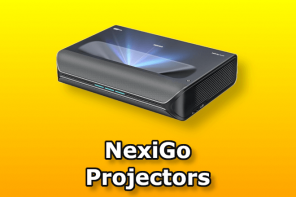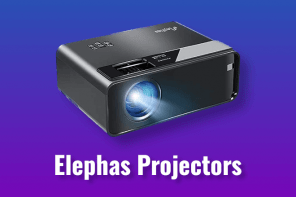Today we’ll be going over the Kodak Luma projector series, which is a collection of 5 different models that all vary in performance and functionality. The models currently available are the: 75, 150, 350, 400, and 450. Are you here trying to figure out which model you should buy vs another? Or are you wondering whether they’re even worth getting?
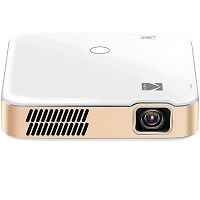 I would say the main draw of these mini projectors is that they’re extremely portable and battery-powered. This allows you to easily transport them around; for example, when you want to watch movies outdoors in your backyard or while camping. Another nice feature is the outrageously long lamp life, as the bulbs in these last up to 30K hours. This will save you money down the line from not having to buy additional bulbs. I’ll try to review all of the important aspects of each model below.
I would say the main draw of these mini projectors is that they’re extremely portable and battery-powered. This allows you to easily transport them around; for example, when you want to watch movies outdoors in your backyard or while camping. Another nice feature is the outrageously long lamp life, as the bulbs in these last up to 30K hours. This will save you money down the line from not having to buy additional bulbs. I’ll try to review all of the important aspects of each model below.
Jump To Section
"As an Amazon Associate I earn from qualifying purchases. This does not influence our content and helps keep the site running."
Overall Design
You’ll notice the design is very clean and modern in appearance, with a sleek outer shell and rounded edges. This gives the projector a high-end look that would fit well next to all your other media devices. There are a few illuminated touch-sensitive buttons on top to navigate menus, and connectivity ports on the back for plugging things in.
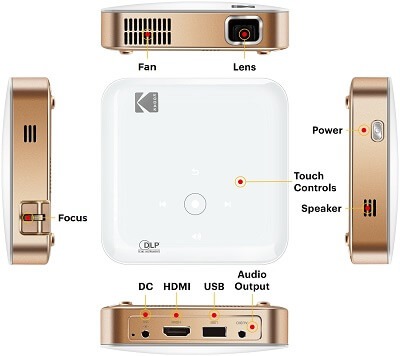 Many of the Kodak Luma models can easily fit into a pocket of some sort. However, you may be surprised to hear that they aren’t all the same size. Yes, in photos, they all appear similar; but they vary in their dimensions quite a bit. The Kodak Luma 75 is the smallest at just 3 x 3 x 0.8 inches. The Kodak Luma 400 and 450 are the largest, coming in at 4.9 x 4.9 x 1.26 inches. That’s actually a sizable difference between the models, though obviously they’re all still quite compact compared to many alternative projectors.
Many of the Kodak Luma models can easily fit into a pocket of some sort. However, you may be surprised to hear that they aren’t all the same size. Yes, in photos, they all appear similar; but they vary in their dimensions quite a bit. The Kodak Luma 75 is the smallest at just 3 x 3 x 0.8 inches. The Kodak Luma 400 and 450 are the largest, coming in at 4.9 x 4.9 x 1.26 inches. That’s actually a sizable difference between the models, though obviously they’re all still quite compact compared to many alternative projectors.
Some of the Kodak Luma models are even considered ultra mini projectors because of their tiny size. You won’t really realize how miniature they are until you see them in person. In fact, you’ll probably say they looked bigger in photos. Yes, this is very much like when you connect with someone on a dating app and discover that things actually look much smaller in person, but I digress.
KODAK Luma 450
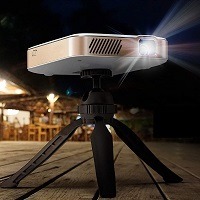 Starting at the high-end is the Kodak Luma 450. The projector has a native resolution of 1920×1080, making it capable of displaying a true Full HD image. If you want to have the clearest and crispest image possible, this is the model to buy.
Starting at the high-end is the Kodak Luma 450. The projector has a native resolution of 1920×1080, making it capable of displaying a true Full HD image. If you want to have the clearest and crispest image possible, this is the model to buy.
For brightness the Kodak Luma 450 is rated at 200 ANSI lumens. This puts it on par with something like the popular Anker Capsule Max. It’ll look its best in a dark room, like all projectors, but there’s enough brightness here for some dim lights to be on in your room.
Moving over to the connectivity side of things. You have HDMI, USB, audio out, Bluetooth, and WiFi. Wireless screen sharing feature supports AirPlay for iOS devices and Miracast for Android and Windows. The HDMI port is what you’ll use to play your media devices. This includes any Amazon streaming sticks, Roku devices, gaming consoles, Blu-Ray players, and more. The USB port can be used to playback video files you have loaded on a flash drive.
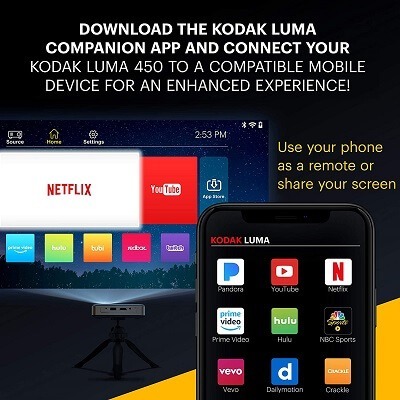 They say the projector can run on its built-in battery for up to 3 hours at max eco settings. That’s enough for many types of shows or movies. And at a distance of 12 feet, you’ll see an image that’s 150″ in size.
They say the projector can run on its built-in battery for up to 3 hours at max eco settings. That’s enough for many types of shows or movies. And at a distance of 12 feet, you’ll see an image that’s 150″ in size.
This model is considered a “smart” projector, since it has Android 9.0 installed. With this feature you have access to some various apps that can be installed onto the device. Except it seems to be gradually becoming outdated now. I would recommend you just use a media stick like a Roku or similar thing to watch Netflix, Disney+, and those types of things.
Important Note:
I’ll make a quick note here. The Kodak company says this model comes with a USB-C port that can be used to charge the projector. This would allow you to charge the machine with a battery pack on the go. However, some people have said that theirs doesn’t charge via this port. Also, older versions of the Luma 450 apparently didn’t include a USB-C port at all.
KODAK Luma 400
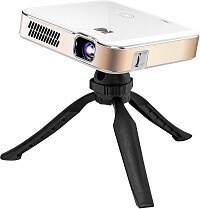 Looking over the Kodak Luma 400 you’ll see that it has a lot of similarities to the 450. The most immediate difference is the lower native resolution of 1280×720, making this a 720p projector. Though it will accept input from 1080p or even 4K sources. They just won’t be quite as clear as a native 1080p projector in comparison.
Looking over the Kodak Luma 400 you’ll see that it has a lot of similarities to the 450. The most immediate difference is the lower native resolution of 1280×720, making this a 720p projector. Though it will accept input from 1080p or even 4K sources. They just won’t be quite as clear as a native 1080p projector in comparison.
The brightness is rated as the same 200 ANSI lumens. It’s a decent amount that will allow you to use the projector in many situations. You shouldn’t need to be in a completely darkened cave to see a picture at least.
As for the connectivity, everything is basically the same as the 450 version. You’ll have access to HDMI, USB, audio out, and wireless functionality here. This model also has Android 9.0 installed for smart features. I’d still suggest you use a separate device though, since they would likely be faster and better at handling everything. The Kodak Luma 400 is pretty much the 450 model, but with a 720p native resolution.
KODAK Luma 350
Well here’s one of the most popular models, the Kodak Luma 350. It has a native resolution of 854×480, which is a step below 720p, but still 16:9 at least. Thankfully the brightness has stayed the same and you’ll enjoy 200 ANSI lumens of brightness.
The physical size also shrinks down a bit, to 4.4 x 4.4 x 0.89 inches. That’s about half an inch around the machine and about 1/3rd of an inch in thickness. Even with this smaller size, the specifications state the dual speakers are 1.5-watts on the Kodak Luma 350 projector. Both of the 400 and 450 versions have dual 1-watt speakers, at least from the information I’ve seen. Watch the following YouTube video to see it in action and some helpful tips.
Connectivity also changes slightly by removing the USB-C port, everything else is the same, including wireless screen sharing. The HDMI will work with your favorite streaming sticks or video game consoles. You can also use the USB-A port to play videos off of flash drives. This model is also considered a smart projector, but only has Android 6.0.1 installed. You can still get apps and all that but you’ll probably end up just using a separate media device for streaming your favorite videos.
Update:
Experience the Cinema at Home with the Kodak Luma 350 Projector – Check Out the Latest Amazon Price!
KODAK Luma 150
Here’s the other popular model, the Kodak Luma 150, which is at the top of our Kodak Luma projector comparison. The native resolution is 854×480, but yes, it will still take in 1080p sources. It just won’t be as sharp as the highest models obviously. Its brightness is lower at 60 ANSI though, which means you’ll mostly only be able to use it in dark rooms with minimal light.
The size is also smaller, measuring 3.9 x 3.9 x 0.89 inches. That’s another half an inch smaller than the Kodak Luma 350, making the Kodak Luma 150 even more compact. There’s only one 1.5-watt speaker instead of two but I assume most people will want to just plug external speakers in anyway. Though there isn’t any Bluetooth on this model so you’ll need to use the 3.5mm audio out port.
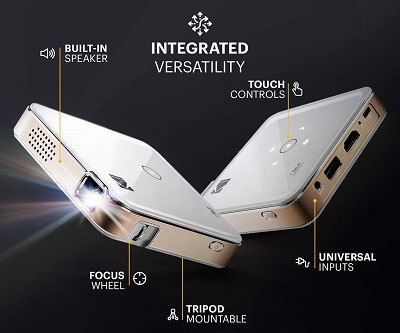 You still have an HDMI, USB-A, and Audio Out port; but now you also have a MicroSD card slot. This is now another way to playback movie files instead of using the USB. Just load your videos onto a MicroSD and the Kodak Luma 150 projector will play them. It may not handle the highest encodings but it’s a great way to store a collection of content on your projector.
You still have an HDMI, USB-A, and Audio Out port; but now you also have a MicroSD card slot. This is now another way to playback movie files instead of using the USB. Just load your videos onto a MicroSD and the Kodak Luma 150 projector will play them. It may not handle the highest encodings but it’s a great way to store a collection of content on your projector.
You’re able to mirror the screen on your smartphone, tablet, or computer thanks to the AirPlay and Miracast capability. Android isn’t installed so there aren’t any built-in apps but pairing a streaming stick is easy enough to get that functionality.
🌎 Elevate Your Movie Nights with the Kodak Luma 150 Projector – Discover the Latest Amazon Deal!
KODAK Luma 75
The Kodak Luma 75 is the lowest entry point into the projector line. As I previously mentioned, it’s the smallest size, being only 3 inches squared. It has the capability of displaying a 100″ image, but is the dimmest model, outputting only 30 ANSI lumens, according to the Kodak company. This means you’d really only be able to use the projector in a completely darkened room. The native resolution is 640×360, making it the lowest resolution as well. Just like the others though, it will accept and play 1080p sources.
Connectivity is almost the same as the Kodak Luma 150; there’s an HDMI, USB, MicroSD, and Audio Out. However, the Luma 75 completely lacks any sort of wireless features. No WiFi screen sharing and no Bluetooth on this model. This may affect your decision when choosing between the Kodak Luma 75 vs 150. If those are important to you then you’ll probably want to get a higher model.
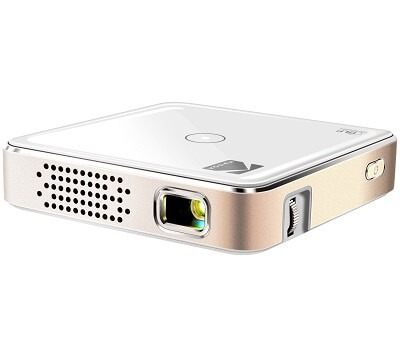 The built-in speaker is only a single 1-watt source. That means the sound will be a bit quieter and “tinny” compared to the stereo versions. However, you can still plug in external speakers like the others to improve the quality. If you’re interested in this model I’d suggest you consider the Kodak Luma 150 instead. The brightness is rated at double the amount, there’s wireless features, and the resolution is higher meaning you’ll have a clearer image. It’s also not that big of a price difference between the two.
The built-in speaker is only a single 1-watt source. That means the sound will be a bit quieter and “tinny” compared to the stereo versions. However, you can still plug in external speakers like the others to improve the quality. If you’re interested in this model I’d suggest you consider the Kodak Luma 150 instead. The brightness is rated at double the amount, there’s wireless features, and the resolution is higher meaning you’ll have a clearer image. It’s also not that big of a price difference between the two.
Kodak Luma 75 vs 150
Are you wondering what the differences are between the Kodak Luma 75 vs Luma 150 models? More importantly, would you like to know whether the Luma 150 is worth the extra cost? This is a specific question that comes up often for people. Let’s compare these two models directly to make your decision a little easier.
75 vs 150 Luminance
In terms of brightness, the Luma 75 outputs 30 ANSI lumens while the Luma 150 can output 60 ANSI lumens. This means the Luma 150 will be a bit brighter in comparison. A benefit of having this extra brightness is that you’ll be able to project a larger screen size while retaining the luminance level over the Luma 75.
75 vs 150 Clarity
Another difference is their native resolutions, this is what helps determine the picture “sharpness” or clarity. They can both accept 1080p sources, but they run at different internal resolutions. The Luma 75 processes images at 640×360 and the Luma 150 is rated as 854×480. You’ll notice more visual detail overall when watching movies or playing games on the Kodak 150. The Kodak 75’s image might appear a little softer in comparison.
75 vs 150 Features
Then we have the functionality differences. Almost everything is the same here, except that the Kodak 150 has wireless capabilities. This allows you to screenshare your smartphone or tablet without needing any physical cables. The speakers also have a slight difference. The 75’s specification is 1-watt and the 150’s is 1.5-watt. So you may hear audio that’s a bit louder or clearer.
I think the Luma 75 is fine if you’re just looking for a basic portable projector, whether it be for some arts and crafts projects or nighttime movie watching. However, the Luma 150 will be clearer and brighter. It’ll be up to you whether it’s worth the additional cost deciding between the Kodak Luma 75 vs 150. Personally, I would say it is. I really think you’ll be happier with it overall.
Kodak Luma 150 vs 350
The Luma 150 and Luma 350 are both popular Kodak models, each offering their own features. We’ll compare the two models directly to help you weigh the pros and cons of each option. By doing so, you can gain a better understanding of the differences between them and determine which one will best meet your needs and preferences.
150 vs 350 Luminance
Brightness is one of the biggest distinctions here. The Luma 150 can display 60 ANSI lumens, while the Luma 350 will output 200 ANSI lumens. From technical information online, it seems that in order to get a perceived “double brightness” you generally need 3-4 times the amount of lumens. So, going from 60 to 200 ANSI lumens doesn’t mean you’ll see an image that’s 3X as bright. On the contrary, it could be something like 50% brighter, which is still a nice benefit but it won’t be a massive jump.
 Obviously, you’ll be able to use your projector in more situations with a higher brightness. However, if you only plan on using your projector for arts and crafts or nighttime viewing, I’d say the Luma 150 is totally fine for you. I should also mention that the closer the projector is to your wall the brighter the image will appear.
Obviously, you’ll be able to use your projector in more situations with a higher brightness. However, if you only plan on using your projector for arts and crafts or nighttime viewing, I’d say the Luma 150 is totally fine for you. I should also mention that the closer the projector is to your wall the brighter the image will appear.
150 vs 350 Clarity
When it comes to clarity, both of these models render at the same internal native resolution of 854×480. This means that the actual picture being displayed should appear just as sharp regardless of which model you buy. Both projectors will also take in a Full HD 1080p source via the HDMI port. But in terms of clarity and resolution the 150 and 350 models should be the same.
Please remember, there’s a focus wheel on the side of the projector that you need to adjust every time you move it to a new position. This will focus the picture and give you a less blurry image. The sharpness required changes depending on how far away the projector is from the wall. Think of it sorta like a telescope.
150 vs 350 Features
Here’s where the main differences start showing up. The Luma 150 is a plain pico projector with no smart features, while the Luma 350 includes Android 6.0 for some built-in apps. This is NOT a reason to get the Luma 350 though. Android 6.0 was released in 2015, so it’s pretty outdated. I wouldn’t use the built-in apps and would recommend you use a streaming devices such as a Roku, Amazon Fire TV Stick, or something similar.
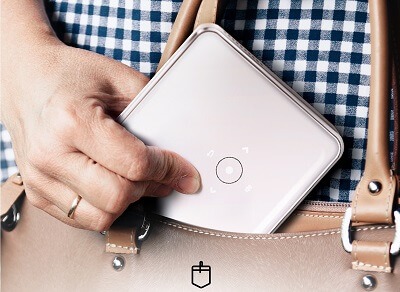 Another difference between the two models are the ports offered. They both include an HDMI, USB, and 3.5mm audio out port. But the Luma 150 has a MicroSD card slot while the 350 model unfortunately lacks this. The Luma 350 does add Bluetooth and dual speakers compared to the 150 model but those aren’t huge selling points in my opinion. You’d be able to use the audio out port to plug in external speakers anyway. It’s also important to note now that the newer Luma 150 models don’t seem to have any keystone correction.
Another difference between the two models are the ports offered. They both include an HDMI, USB, and 3.5mm audio out port. But the Luma 150 has a MicroSD card slot while the 350 model unfortunately lacks this. The Luma 350 does add Bluetooth and dual speakers compared to the 150 model but those aren’t huge selling points in my opinion. You’d be able to use the audio out port to plug in external speakers anyway. It’s also important to note now that the newer Luma 150 models don’t seem to have any keystone correction.
So, for most people, I’d probably recommend just getting the Kodak Luma 150 vs 350 projector. The main reason to get the 350 model is the extra brightness. The built-in apps aren’t really worth it and it’s easy enough to add apps with a media streaming device. Plus the MicroSD slot on the Luma 150 is great for keeping a collection of videos on your projector at all times.
Kodak Luma 350 vs 450
As we continue our exploration of the Kodak projector line, it’s time to turn our attention to the Kodak Luma 350 vs 450 models. Both are high-quality projectors that offer impressive features and functionality, but how do they compare against each other? In this section, we’ll dive into the specifics of each model and compare them head-to-head, helping you make an informed decision about which one is right for you.
350 vs 450 Luminance
Both projector models offer the highest possible brightness output in the Kodak Luma line, with an ANSI rating of 200 lumens on each of them. This means that they should provide a similar level of brightness, making them suitable for use in dimly-lit rooms.
While the two models have the same brightness rating, there may be other differences in terms of their performance and features that can affect their overall image quality. Therefore, it’s important to consider other factors beyond just brightness when deciding between the Kodak Luma 350 vs 450.
350 vs 450 Clarity
Comparing the clarity of the Luma 350 and Luma 450, the main difference lies in their native resolution. The Luma 350 has a resolution of 854×480, while the Luma 450 boasts a native 1920×1080 image. This means that the Luma 450 is capable of producing a clearer and sharper image, with more detail and less blurriness compared to the Luma 350.
The higher resolution of the Luma 450 allows for a more immersive viewing experience regardless of what media content you’re watching. So if you prioritize image clarity and detail, the Luma 450 might be the better choice for you. This is likely the biggest difference between both of these models.
350 vs 450 Features
As far as features go, the Luma 350 and Luma 450 share several similarities. Both projectors offer one HDMI, USB, Audio Out, Bluetooth, and WiFi functionality. This makes them well-equipped to connect to various devices. Additionally, both projectors are powered by Android OS, although the Luma 350 uses version 6.0 while the Luma 450 uses a newer 9.0 version.
However, the Luma 450 does have a USB-C port, which is a notable difference between the two models. Overall, these similarities and differences in features make the Luma 350 and Luma 450 both strong options for those seeking a projector with diverse connectivity options and capabilities.
Similarities
These Kodak projector models have a lot in common. For starters, they all have illuminated touch-sensitive buttons on top of the device, allowing you to easily navigate the various menus. The fan noise is also around 29dB, which is relatively quiet compared to other brands. The lamp life is rated around the same 30K hours for all of the models. Meaning you won’t have to worry about replacing the light bulb like some alternative projectors.
Update: In the past, the Luma 75 and Luma 150 seemingly had a form of vertical auto keystone. It has come to our attention that Kodak may have removed this functionality at some point on those models. If you need keystone correction, you’ll want to look into the Luma 350 and above. If you aren’t familiar with what the keystone correction feature is, it basically just helps adjust the image alignment to sit flush against your wall or projection screen. It’ll assist in preventing your projected image from looking like a trapezoid instead of a pristine rectangle. On the WiFi side of things, the systems only support 2.4Ghz wireless and not 5Ghz.
Finally, they all have a built-in battery, allowing you to watch videos cordless. Though you are still able to plug in a power cord into a home outlet to use the projector for extended periods of time. This gives you more freedom of when and where you want to use your projector. The projectors are typically usable between 0.65 to 12.5 ft away.
Differences
This might be the most important section for you, especially if you’re having trouble deciding which Luma model to get. I’ll try to cover all of the important factors here and organize them as cleanly as possible.
Resolution
The native resolution is one of the biggest differences between models. This specification is what determines the clarity of your image. The higher the resolution the sharper and less blurry everything will appear.
Kodak Luma 450: 1920×1080
Kodak Luma 400: 1280×720
Kodak Luma 350: 854×480
Kodak Luma 150: 854×480
Kodak Luma 75: 640×360
Brightness
Obviously brightness ratings are equally important when choosing a projector for yourself. These models are all rated in “ANSI” lumens, which is a specific way to measure brightness, allowing you to compare between models and even other brands. Having a projector with a higher brightness will let you use the machine more frequently. I’m mainly referring to daytime viewing when your room might not be completely pitch black.
Kodak Luma 450: 200 ANSI lumens
Kodak Luma 400: 200 ANSI lumens
Kodak Luma 350: 200 ANSI lumens
Kodak Luma 150: 60 ANSI lumens
Kodak Luma 75: 30 ANSI lumens
Connectivity
Now we’re comparing the various inputs and ports. It’s nice to have a lot of options here, as it’ll give the projector more versatility. The 450, 400, and 350 models all have Android OS installed for smart features and downloadable apps. Though you can use a Roku, Amazon Fire TV, or similar streaming device to have this type of functionality.
Kodak Luma 450, 400: HDMI, USB, USB-C, Audio Out, Bluetooth, WiFi, Android OS 9.0
Kodak Luma 350: HDMI, USB, Audio Out, Bluetooth, WiFi, Android OS 6.0
Kodak Luma 150: HDMI, USB, Audio Out, Wireless, MicroSD
Kodak Luma 75: HDMI, USB, Audio Out, MicroSD
Other Aspects
There are a few other things that don’t quite fit anywhere else, so I’ll list them here. The 450, 400, and 350 models come with a remote control while the lower models don’t. Both the 450 and 400 projectors include a tripod in the package. Having a tripod may make it a little easier to find a location to set your Kodak projector up.
Battery life is similar but not the same across the Luma series. The upper models last a max of up to 3 hours on eco mode, while the lower models tend to max around 2 or 2 1/2 hours. It’s a bit minor but I think important to note nonetheless.
Other Uses
There are a lot of people that enjoy using the Kodak Luma projectors to trace designs onto things. Because of their small size and lightweight, it’s incredibly easy to attach them to something and shine them onto a table. I’ve seen it work great for people that are decorating cakes or cookies. All you have to do is load your photos up, point the projector down, and start tracing everything with delicious frosting.
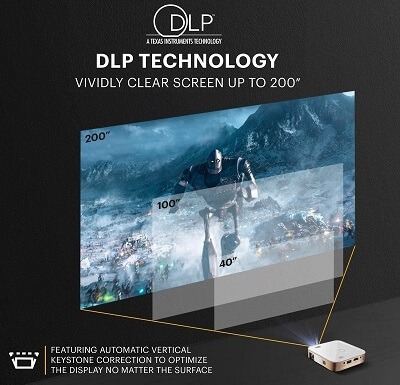 Naturally this downward projection also works for regular art, if you’re needing to trace over something or create some type of art project. What if you projected a design against your wall to paint something unique? Any creative person will probably think of even more uses for this. It’s just another nice feature that bigger projectors wouldn’t match as easily. These are a solid choice if you’re looking for a projector to decorate cakes and cookies, or some sort of similar design task.
Naturally this downward projection also works for regular art, if you’re needing to trace over something or create some type of art project. What if you projected a design against your wall to paint something unique? Any creative person will probably think of even more uses for this. It’s just another nice feature that bigger projectors wouldn’t match as easily. These are a solid choice if you’re looking for a projector to decorate cakes and cookies, or some sort of similar design task.
Final Thoughts & Recommendation
These Kodak Luma mini projectors have a lot of similarities, but several key differences as well. The fact that they’re battery-powered and so portable allows you to conveniently take them wherever you want. They’ll work with the latest media devices too; like streaming sticks, Blu-Ray players, and even video game consoles such as the Nintendo Switch, PS5, or XBOX systems. Overall they offer a lot of versatility but the real decision will come down to which one is right for you.
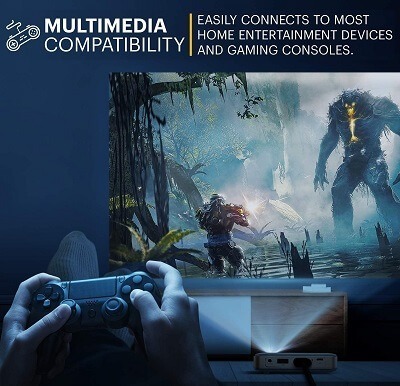 Hopefully you feel a bit more well-informed about the various models and can narrow down your decision. I’d personally recommend buying either the Kodak Luma 150 or Kodak Luma 350. The Luma 75 is okay, but the resolution and brightness is a bit lower than the other models. Plus the price difference isn’t that much to just upgrade to the Luma 150. I think you’ll be happier with the better specifications. Likewise, the Kodak Luma 350 is in a good spot I think, as long as you use some sort of media stick and don’t use the built-in apps. It has the same 200 ANSI brightness as the top models but is typically quite a bit more affordable. If you’re doing nighttime viewing the Kodak Luma 150 is probably fine for you.
Hopefully you feel a bit more well-informed about the various models and can narrow down your decision. I’d personally recommend buying either the Kodak Luma 150 or Kodak Luma 350. The Luma 75 is okay, but the resolution and brightness is a bit lower than the other models. Plus the price difference isn’t that much to just upgrade to the Luma 150. I think you’ll be happier with the better specifications. Likewise, the Kodak Luma 350 is in a good spot I think, as long as you use some sort of media stick and don’t use the built-in apps. It has the same 200 ANSI brightness as the top models but is typically quite a bit more affordable. If you’re doing nighttime viewing the Kodak Luma 150 is probably fine for you.
The Luma 450 costs similar to the LG PF50KA, which makes it a bit harder to recommend. Once you get into that price range I’d suggest looking into the LG or others as an alternative. The LG model has three times the brightness, outputting 600 ANSI lumens, along with having more connectivity available. It can run on battery power and has many similar aspects. But yes, it is a little larger, at 6.7 inches squared. Bottom line, if you’re looking at getting a Kodak ultra mini portable projector, we hope this informative guide has been helpful, since our goal here has been to compare Kodak Luma projectors.
Kodak Projector Offers
Go ahead and visit the following links below to see the latest prices and offers currently running on Amazon. Everything can change in an instant so be sure to add the projector to your shopping cart so you can see a full total cost including tax or any offers applied.
"As an Amazon Associate I earn from qualifying purchases. This does not influence our content and helps keep the site running."

